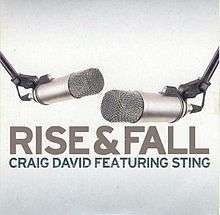Latest News for: rise & fall
Edit
Shift in ground in the Indian labour market
Hindustan Times 19 Nov 2024
This newspaper has been sceptical in unequivocally celebrating the falling unemployment rate and rising LFPR numbers because of another statistic in the PLFS numbers — a rise in unpaid self-employment ...
Edit
Bitcoin Breaks into Top 7 Global Assets as Market Cap Surpasses $1.8 Trillion
Crypto Economy 19 Nov 2024
Edit
Apple reveals most popular podcasts of 2024
BGR 19 Nov 2024
On December 3, Apple Podcasts will reveal the Show of the Year ... The Tucker Carlson Show Three Mortal Sin Drowning Creek The Rise and Fall of Ruby Franke Top Series ... “Dr ... Apple News+ Narrated Morbid Dateline NBC The Rise and Fall of Ruby Franke Dr ... .
Edit
 Marietta Daily Journal
19 Nov 2024
Marietta Daily Journal
19 Nov 2024
Pennsylvania Sees the 7th Largest Seasonal Change in Home Prices in the U.S.
 Marietta Daily Journal
19 Nov 2024
Marietta Daily Journal
19 Nov 2024
Edit
 Marietta Daily Journal
19 Nov 2024
Marietta Daily Journal
19 Nov 2024
Kansas Sees the 13th Largest Seasonal Change in Home Prices in the U.S.
 Marietta Daily Journal
19 Nov 2024
Marietta Daily Journal
19 Nov 2024
Edit
 Marietta Daily Journal
19 Nov 2024
Marietta Daily Journal
19 Nov 2024
Indiana Sees the 14th Largest Seasonal Change in Home Prices in the U.S.
 Marietta Daily Journal
19 Nov 2024
Marietta Daily Journal
19 Nov 2024
Edit
 Marietta Daily Journal
19 Nov 2024
Marietta Daily Journal
19 Nov 2024
Missouri Sees the 10th Largest Seasonal Change in Home Prices in the U.S.
 Marietta Daily Journal
19 Nov 2024
Marietta Daily Journal
19 Nov 2024
Edit
 Marietta Daily Journal
19 Nov 2024
Marietta Daily Journal
19 Nov 2024
Illinois Sees the 2nd Largest Seasonal Change in Home Prices in the U.S.
 Marietta Daily Journal
19 Nov 2024
Marietta Daily Journal
19 Nov 2024
Edit
 Marietta Daily Journal
19 Nov 2024
Marietta Daily Journal
19 Nov 2024
Idaho Sees the 15th Smallest Seasonal Change in Home Prices in the U.S.
 Marietta Daily Journal
19 Nov 2024
Marietta Daily Journal
19 Nov 2024
Edit
 Marietta Daily Journal
19 Nov 2024
Marietta Daily Journal
19 Nov 2024
South Carolina Sees the 10th Smallest Seasonal Change in Home Prices in the U.S.
 Marietta Daily Journal
19 Nov 2024
Marietta Daily Journal
19 Nov 2024
- 1
- 2
- Next page »


